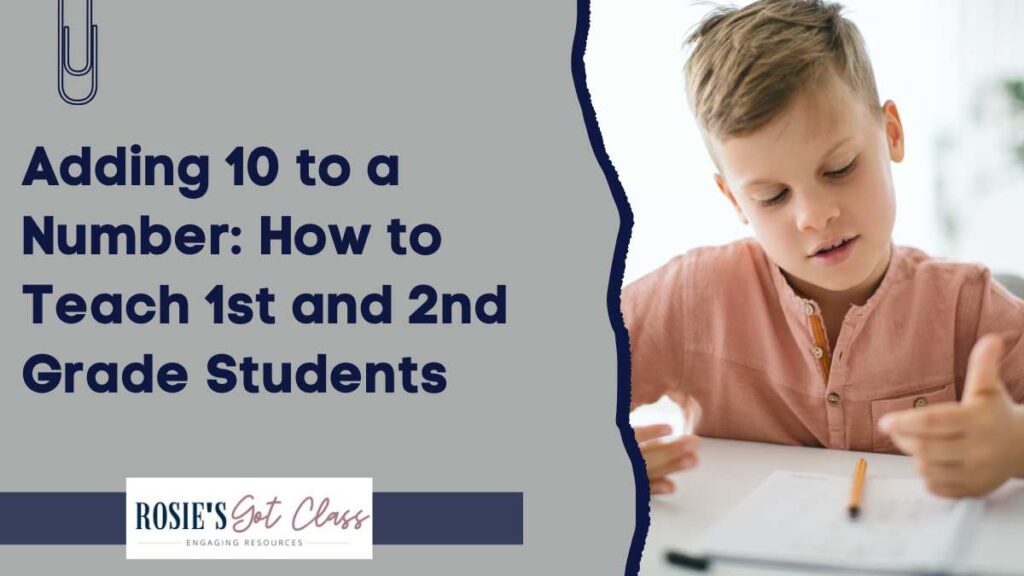
Adding 10 to a number is fun to teach to students because it is exciting when you can see it click for them. It is a foundational math skill and is thrilling to see when they realize what happens every time you add 10 to a number. This concept is essential to build number sense since it helps them with more complex math as they progress as mathematicians. (I love calling my students mathematicians because it strengthens their confidence while building their vocabulary.)
Building number sense to help students practice adding 10 to a number is easily done by playing games. Did you play the dot game when you were young? I know I really liked this game, and this is why I created Dot Addition and Dot Subtraction. You can use it in your classroom today. Simply put your name and email address in the boxes, and then check your inbox for this fun and engaging activity that you can use for a math center today.
Before students start adding ten to any number, it’s important they grasp the make a 10 strategy. They need to understand the different ways a 10 can be made which helps them with their number sense. Once students understand this concept, they’re ready to explore adding ten to any number in hands-on, engaging ways. Here are three strategies to make learning this skill fun: using manipulatives; practicing the counting on method; and using a 100’s chart. Each of these methods provides students with the tools to visualize and understand adding ten and reinforces their math skills in ways they’ll enjoy.
Why Begin with the Make a 10 Strategy?
The make a 10 strategy is essential because it helps students recognize friendly numbers and use them as stepping stones in addition. For example, knowing that 7 + 3 = 10 gives students a mental foundation for building and breaking down numbers. This skill becomes particularly useful when adding multiples of ten as students can quickly recognize patterns and group numbers effectively.

Mastering make a 10 first allows students to use this knowledge when they move on to adding ten to any number. For instance, when they add 10 to a number like 6, they’ll know it involves moving up in increments just like making 10. Once they’ve got this strategy down, adding tens becomes easier and a lot more fun!
Build with Manipulatives to Practice Adding 10 to a Number
Manipulatives are one of the best ways to help students understand math concepts like adding ten to any number. They allow students to see, touch, and manipulate the objects which makes math concepts tangible and easier to grasp.
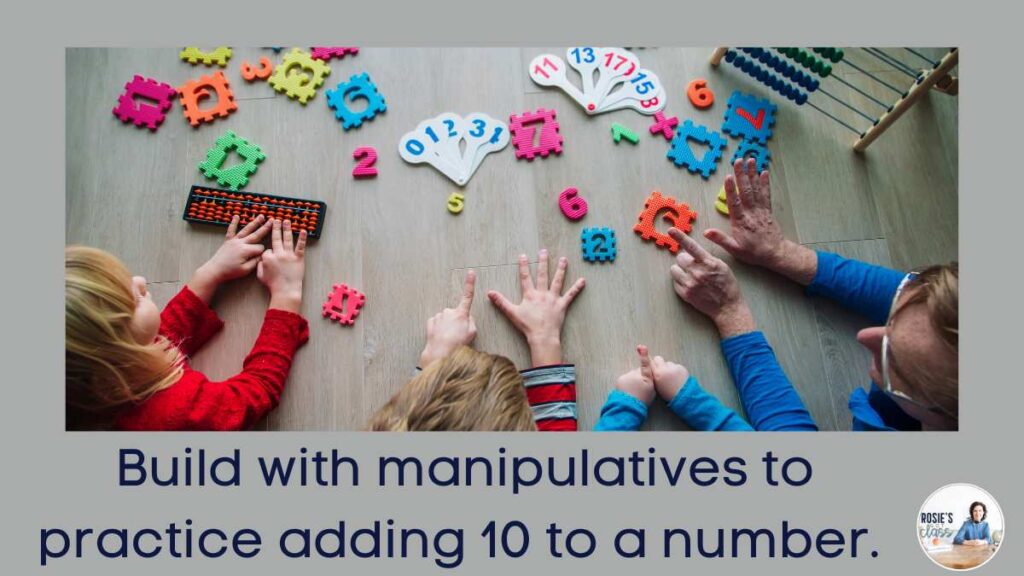
Use Small Counters
Using small counters is an effective way to help students add tens to a given number. Start by having students lay out counters to represent a number such as 7. Once they’ve counted out their group of 7 then ask them to add a new group of 10 counters to this pile.
This hands-on activity helps them to add by ten with both seeing and touching. It also allows them to practice counting the total out loud to reinforce the concept of adding a ten. This approach is especially helpful for students who need to see the numbers represented physically and visually to understand the concept of addition.
Use Linking Cubes
Another great manipulative for adding ten is linking cubes. Students can create a “train” of cubes representing a number such as 6 and then attach another 10 cubes to the train. They will add four to make a 10. After they have done this, they will see that there are 6 cubes left which is the same number they began with. Then students will begin making the connection that when you add a number to a ten, the number in the tens column increases by one. They will also see that the number in the ones column stays the same.
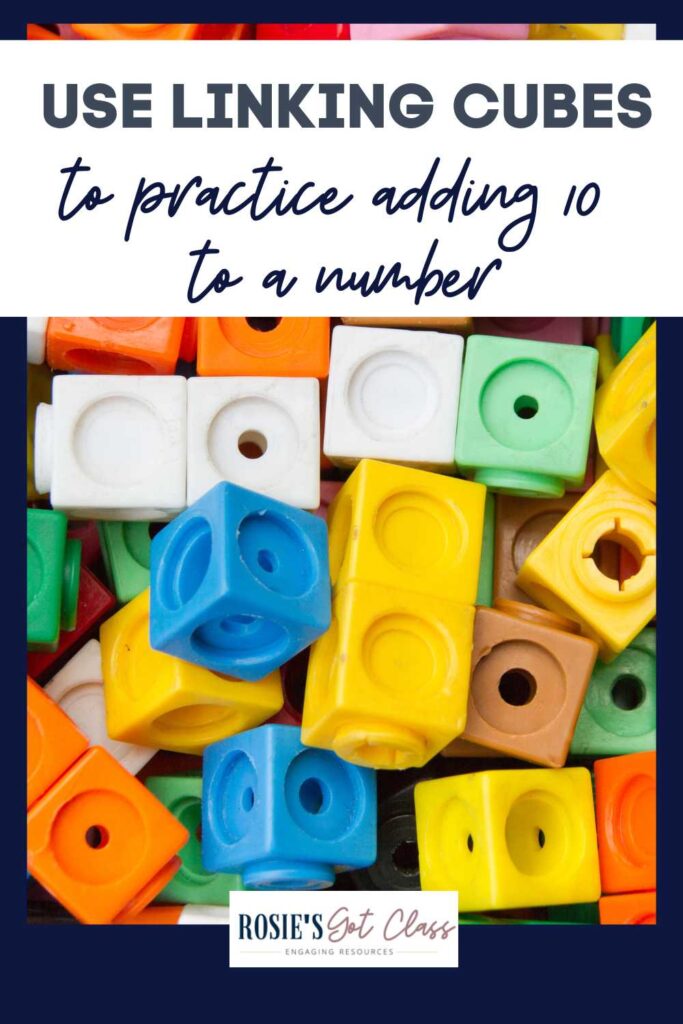
Count On to Add 10 to a Number
The count-on strategy is a quick and practical way for students to add ten to any number. For many students, this approach makes adding tens feel less intimidating and more like a game.
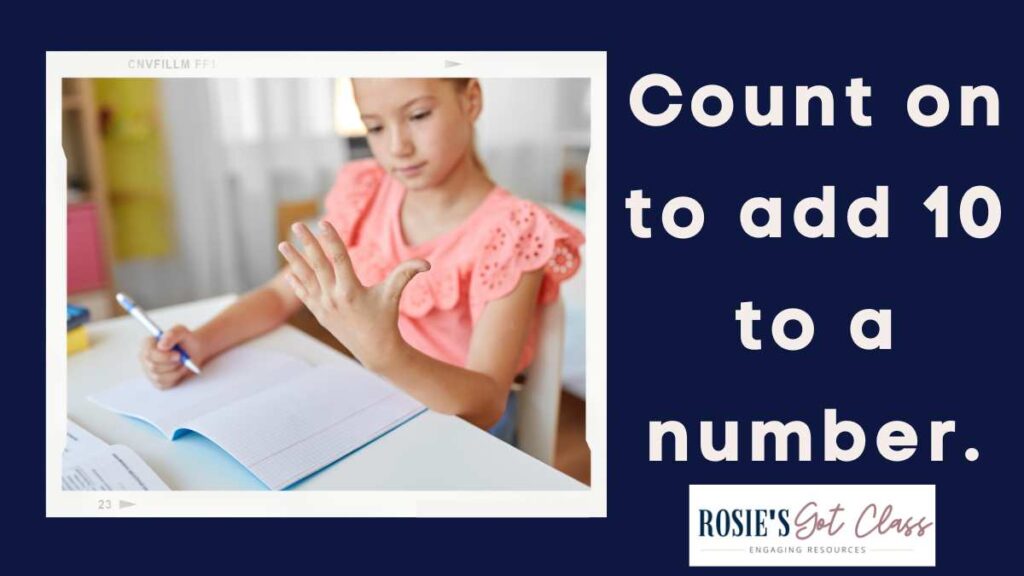
When using this strategy, start with a number and “count on” by ten. After you have practiced this with manipulatives, students will begin counting up by 10 in one step. For example, they will begin with 9, then say 19, 29, etc. This activity is especially effective when done as a whole class activity, and students can take turns picking a starting number and then counting on by ten.
Another twist on this activity is to use a classroom number line. Students can stand on a number like 15 and then “jump” forward by ten spaces to land on the correct answer of 25. The physical movement helps them feel the distance of ten and gives them a visual and physical connection to the process of adding ten.
Explore with a 100’s Chart to Understand How to Add 10 to a Number
The 100’s chart is a versatile tool for teaching students about number patterns, place value, and adding tens. When students are adding ten, they’ll quickly see that moving down one row on the chart means they’re adding 10 to the number above.
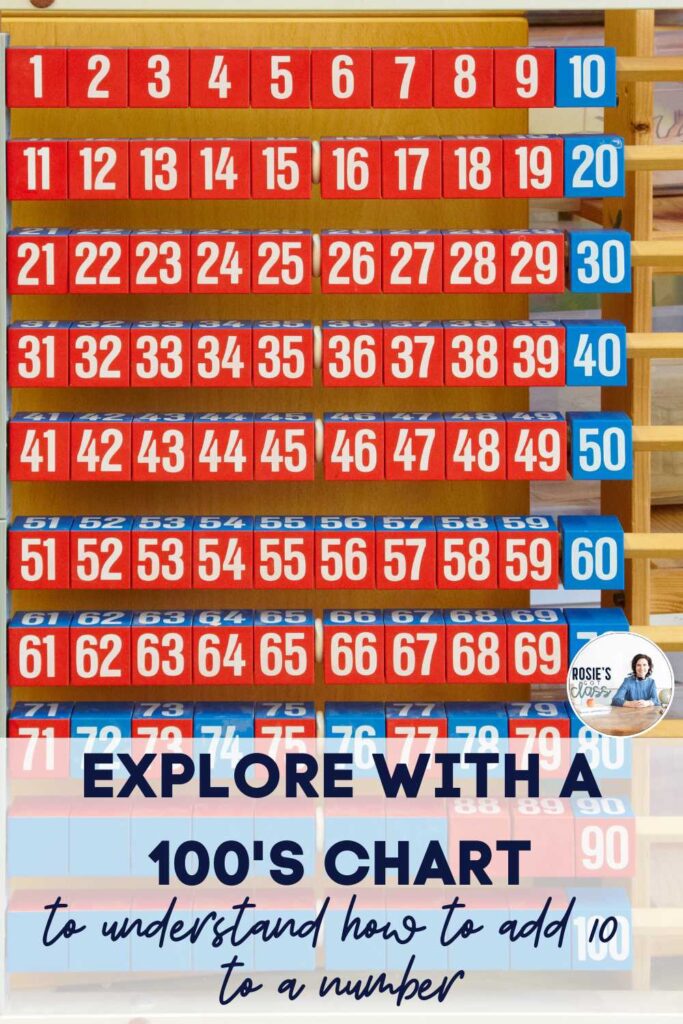
How to Do It:
Start by giving each student their own 100’s chart along with a crayon. Begin by choosing a number on the chart such as 5 and then instruct students to add 10 to get to 15. Then try it again with a different number. Discuss with them if there is an easier and faster way to add a 10. They should notice that they move to the next row. Ask them to repeat the process with different numbers to see the pattern. Each time they add ten, they move to the next row. They can circle each of their beginning numbers and ending numbers with the same color of crayon on the chart to visualize the pattern.
This activity helps students recognize that adding ten changes only the tens digit while the ones digit stays the same. By practicing on the 100’s chart, students build a solid understanding of place value while learning a method they can use independently.
Play a Game To See What Happens When You Add 10 to a Number
Turning the 100’s chart into a game can add even more excitement. Try a game where you give students a “mystery number” such as 23 and ask them to add ten three times in a row to see where they land (33, 43, 53). This type of practice reinforces the pattern of adding tens while encouraging students to predict what happens each time they add ten. It’s also a great way for them to practice mental math in a fun way.
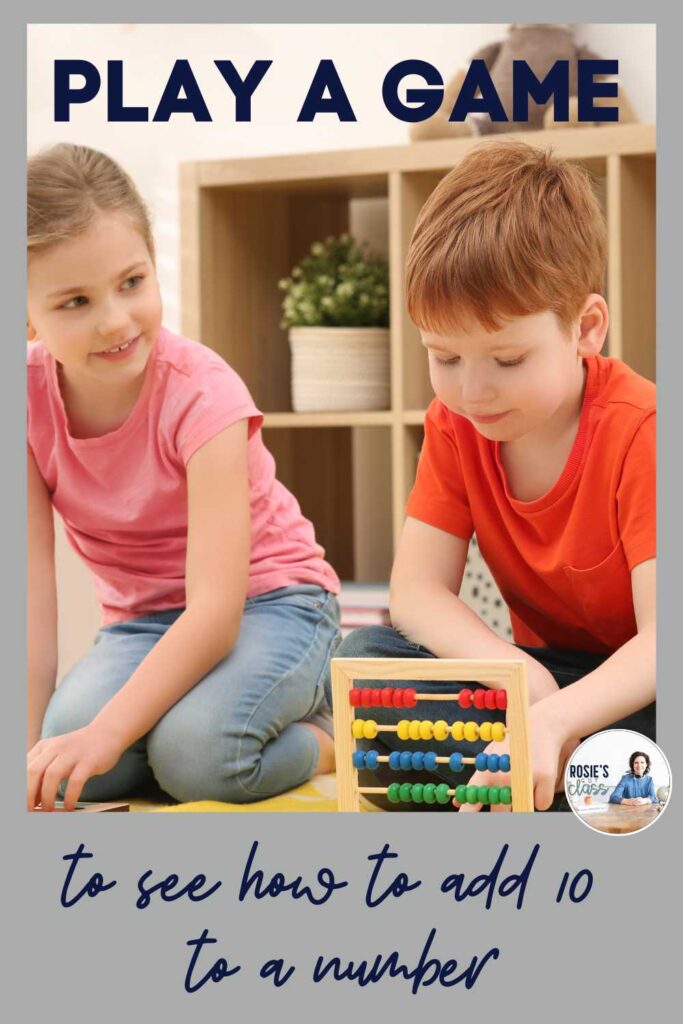
Why These Strategies Work
Each of these strategies—using manipulatives, counting on, and exploring with a 100’s chart—provides unique benefits:
– Manipulatives allow students to physically add and count.
– Counting on offers a quick way to add ten that students can use in everyday scenarios which builds their confidence with mental math.
– The 100’s chart helps students see and understand place value and allows them to visualize how numbers shift when adding tens.
Together these strategies make adding ten engaging and meaningful. By using hands-on materials, you’re giving students the tools to truly understand the concept of adding ten instead of just memorizing it.
In conclusion, adding ten to any number doesn’t have to be a tricky concept for first and second graders. With manipulatives, counting on, and 100’s charts, you’re setting your students up for success with a hands-on and fun approach. Remember, before they jump into adding tens, ensure they’ve mastered the make a 10 strategy because this will give them a solid foundation.
Incorporating these strategies into your math lessons will make learning fun and memorable for your students. And the best part? You’ll be watching their confidence soar as they discover how simple it is to add tens. Give these strategies a try and see how excited your students become about math!
Here is another article you might find helpful.


